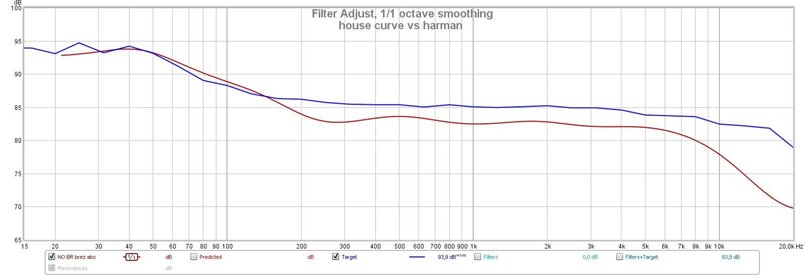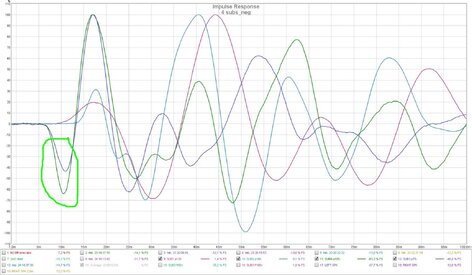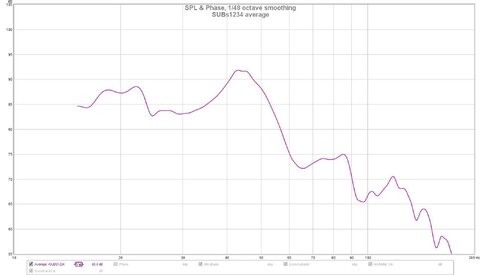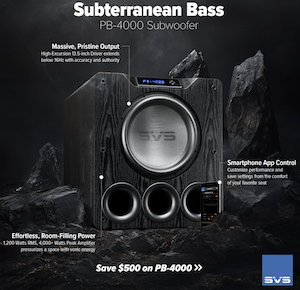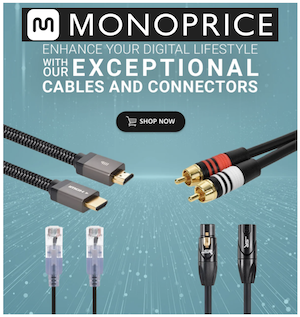Sorry, I keep forgetting or not fully understanding the capabilities and limitations of your stereo setup. I have no experience with this type of setup. My understanding is that you have a double bass type of setup that will send the bass frequencies to the L, R mains and also to the 2 LFE outputs. The LFE output frequency range will be dependent on the setting of the XO in AVR even though the entire range is also sent to the L, R.
No need to be sorry, I don't see you having any issues understanding. So far your help was spot on. My lack of understanding measurements and a language barrier are more likely the reasons for some extra words here. And probably some strange questions.
All these questions are referring to stereo listening.
For movies I will simply run Audyssey (hence the equdistant sub locations), changed it from reference to flat and set all crossovers to 80 Hz. And perhaps turn up sub volumes for a couple of dB.
Do you think this setup is all that different? Yes, bass is redirected to mains and LFE but that's also the case with a regular setup, isn't it? The only difference is the lack of XO. The method I'm trying was proposed by dr. Geddes. He suggests at least 3 subs should be placed randomly, each with different HP/LP filters and then globally EQd at the end. He thinks time alignment below 200 Hz is not important. Mains should be non ported and full range. More here:
https://mehlau.net/audio/multisub_geddes/
If I'm thinking correctly you have the ability change the timing between the 2 front and 2 rear SWs. Presumably, the SPL response with the 2 sets best aligned was not favorable for SPL. It was probably similar to what I found when I time aligning all 4 SWs using REW trace arithmetic. You also have already experimented with; offsetting LFE timing, adjusting the phase controls, and changing the polarity of one or more SWs. There is nothing else to adjust in setting up the 4 SWgroup unless you want to change SW/LP locations or room treatments.
You are thinking correctly. I can change timing for 2 front and 2 rear subs which are equidistant. I didn't bother much with timing as I got pretty good results with phase/filter settings (so I was not using delay/distance). When we started to talk about IR plots and alignment, I tried to align impulses but my AVR settings are obviously too clumsy for that. Probably why many people are using miniDSP 2x4 for delay settings.
You may want to post this mdat for this setup along with the mdat for the previous best setup. We can't really tell anything much by just this impulse response chart. With 4 SWs setup differently and distributed differently in the room, an IR chart like that may represent one of the best setups or one of the worst setups. There is nothing inherently wrong with 1 or 2 of the SW being the opposite polarity if that is the concern. Sometimes that is helpful to the overall response.
Happy to. Please, take a look. Since this is a stereo setup, the lack of SPL below 45 Hz may not be an issue.
My ears can confirm that oposite polarity can sound good. Probably reversed polarity isn't a good thing when using auto correction systems. Hence, if I'm not mistaken, Audyssey suggests all subs should be set to 00+ prior to auto calibration.
It was suggested to initially start with all the same SW settings and close initial timing as a reasonable starting point. If it does not look good for SPL make adjustment using one or more of the available controls mentioned above to try and find a better SPL response. When one is found that setup can be used as the new target and the search continued to find even better settings. At some point it is no longer easy to improve on the target and we accept that last target as our favorable alignment. You have already been doing this a have moved from those initial settings to gain improvement. Ideally each new improved target was compared to the previous one using all the relevant charts to confirm no serious negative tradeoffs were made. Have you now ended this process and identified the SWgroup settings that will be used?
I agree. I will stop when my ears will be happy no matter what plots will say. I'm pretty close now. I'm eager to try my initial setup I had couple of years ago where front subs were next to the mains (now they're behind mains). I'm curious what will happen in the impulse plots.
If I may ask, what was (is?) your setup technique? Crossover at 80, all subs with same phase/polarity, no HP/LF/slope settings, just individual delay for each sub?
??, I may not follow. There appears to be either 2 subjects intermingled here or we are now discussing the subject of timing the 4 SWgroup to mains. The setup of the 4 SWs to each other is not impacted by the timing to the mains. If you haven't yet settled on the settings for the SWgroup then complete that process first.
I'm aware of that. Since you tought me more about IR plots I looked and compared impulse plots of mains and subs. More on that below.
The next step it then to adjust the timing between the SW group and mains. If your AVR auto setup routine is suggesting more than a 6 m change to the timing of L and R or LFE-1 or LFE-2 you are correct it suggests a problem. What is the AVR XO setting? I think it should be 80 Hz or so to match the SWgroup setup that is rolling off at about that frequency. Why is the AVR suggesting distances? I thought you were going for a completely manual setup with no EQ. Maybe you ran it provide EQ settings? If you want that EQ help then possibly the SWgroup to mains delay can still be manually reset to the proper values after the AVR auto setup routine is run?
That's what I was trying to do but was dissapointed when I saw limited options in the AVR. AVR didn't suggest anything (yes, I'm going for a full manual setup with XO set to max value - 250 Hz). I checked the impulse of mains and subs and measure it with REW. Only then I was able to see I need more than 6 meters of distance to align subs and mains.
Which is still a mystery to me since actual distance is 3-4 meters but on a plot we can clearly see REW measured 6,5 meters.
If everything fails I was going to leave everything the way you see in the mdat file above.
What is the AVR XO setting? I think it should be 80 Hz or so to match the SWgroup setup that is rolling off at about that frequency
Does a crossover affect the time alignment between subs and mains?
Remember I am new to this type of setup and may not fully understand the situation, so if we are not making progress that may be the reason.
Oh, we're making progress, I'm learning a lot here! I'm really thankful for your time and effort.








 For the CC the dip at 164Hz says not to EQ higher? Or Is it the alpha male for all mains and it forbid to EQ those 3 channels higher than 164Hz? Or should have generated excess groupdelay response?
For the CC the dip at 164Hz says not to EQ higher? Or Is it the alpha male for all mains and it forbid to EQ those 3 channels higher than 164Hz? Or should have generated excess groupdelay response?
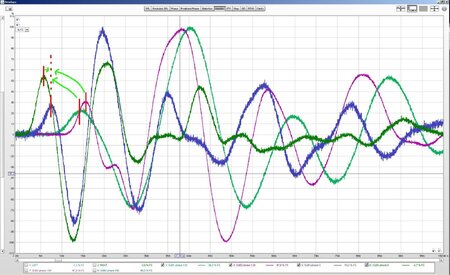
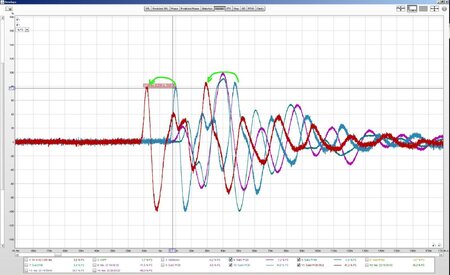
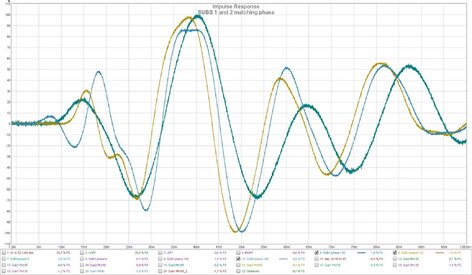
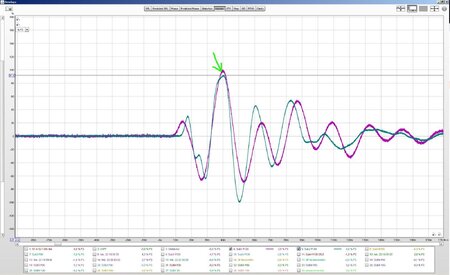
 ); all peaks must be at the same place. Polarity is easy to see: the little rise and the big one are upside down from the reference.
); all peaks must be at the same place. Polarity is easy to see: the little rise and the big one are upside down from the reference.